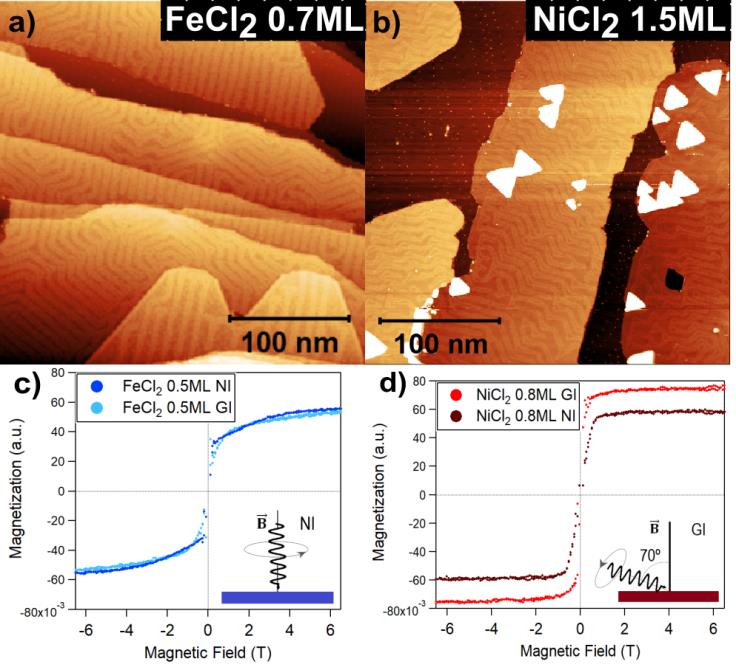Poster presentation
Tunable ferromagnetic order in 2D layered transition metal dichlorides
Andrea Aguirre1,2, A. Pinar3, C. González-Orellana1, J. Ortuzar1,2, M. Peña-Díaz1, O. Stesovych3, J.I. Pascual2, C. Rogero1,4, M. Ilyn1, P. Jelínek3, M. Corso1,2,4
1 Centro de Física de Materiales, San Sebastián (Spain)
2 CIC NanoGUNE, San Sebastián (Spain)
3 Institute of Physics, Czech Academy of Sciences, Prague (Czech Republic)
4 Donostia International Physics Center, San Sebastián (Spain)
Metal dihalides TMDH, where TM is a transition metal, are a class of 2D layered materials bonded through van der Waals interactions. These binary compounds exhibit magnetic texture with semiconducting electronic properties. Since single layers can grow epitaxially on metal substrates, there is a strong interest in determining whether these properties persist at the 2D limit [1].
Here we study the epitaxial growth of FeCl2 and NiCl2 on Au (111). Their chemical and electronic properties were explored high-resolution X-ray photoelectron spectroscopy (XPS) and low-temperature scanning tunneling microscopy and spectroscopy (STM). These 2D materials grow in large and flat monolayers electronically decoupled from the substrate. Our studies on the magnetic properties by X-ray absorption spectroscopy (XAS) revealed a ferromagnetic order related to the 3d electrons of the metal in the compound. Interestingly, the magnetic alignment depends on the TM used, so that it can be switched from out-of-plane to in-plane by substituting the metal ion from iron to nickel. Additionally, to clarify the persistence of the long-range ferromagnetism at the atomic level, we confirmed the same magnetic behavior using nickelocene (Nc) functionalized STM tips.
 Figure 1: STM images of FeCl2 (a) I=20pA U=3.0V and NiCl2 (b) I=10pA U=2.0V. Comparison of magnetization loops for FeCl2 and NiCl2 at normal (NI) and grazing incidence (GI) measured at the Fe (c) and Ni (d) L3 edge.
Figure 1: STM images of FeCl2 (a) I=20pA U=3.0V and NiCl2 (b) I=10pA U=2.0V. Comparison of magnetization loops for FeCl2 and NiCl2 at normal (NI) and grazing incidence (GI) measured at the Fe (c) and Ni (d) L3 edge.
[1] A Bikaljević, D., González-Orellana, C., Peña-Díaz, M., Steiner, D., Dreiser, J., Gargiani, P., et al. ACS nano, 15(9), 14985-1499 (2021).